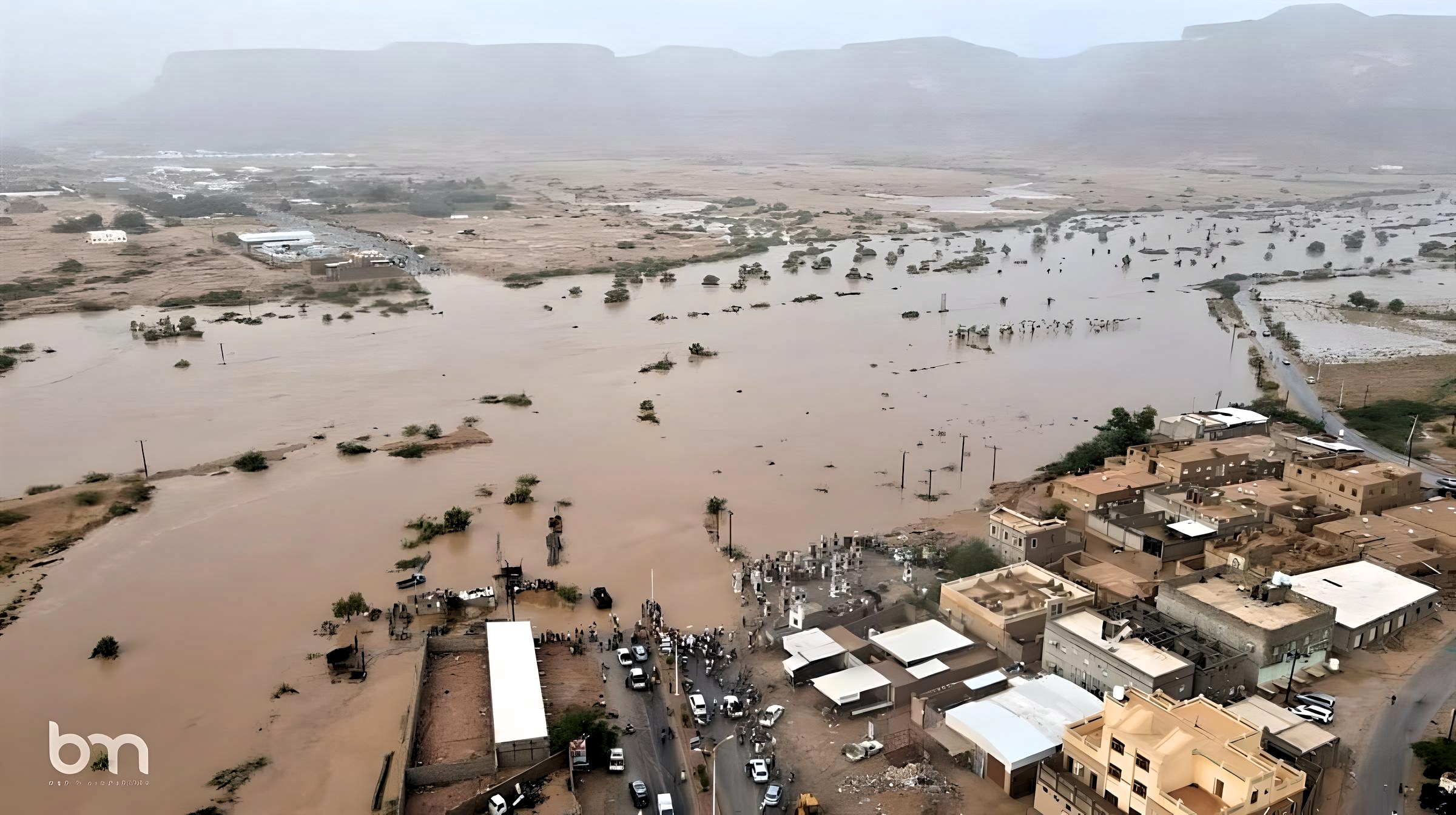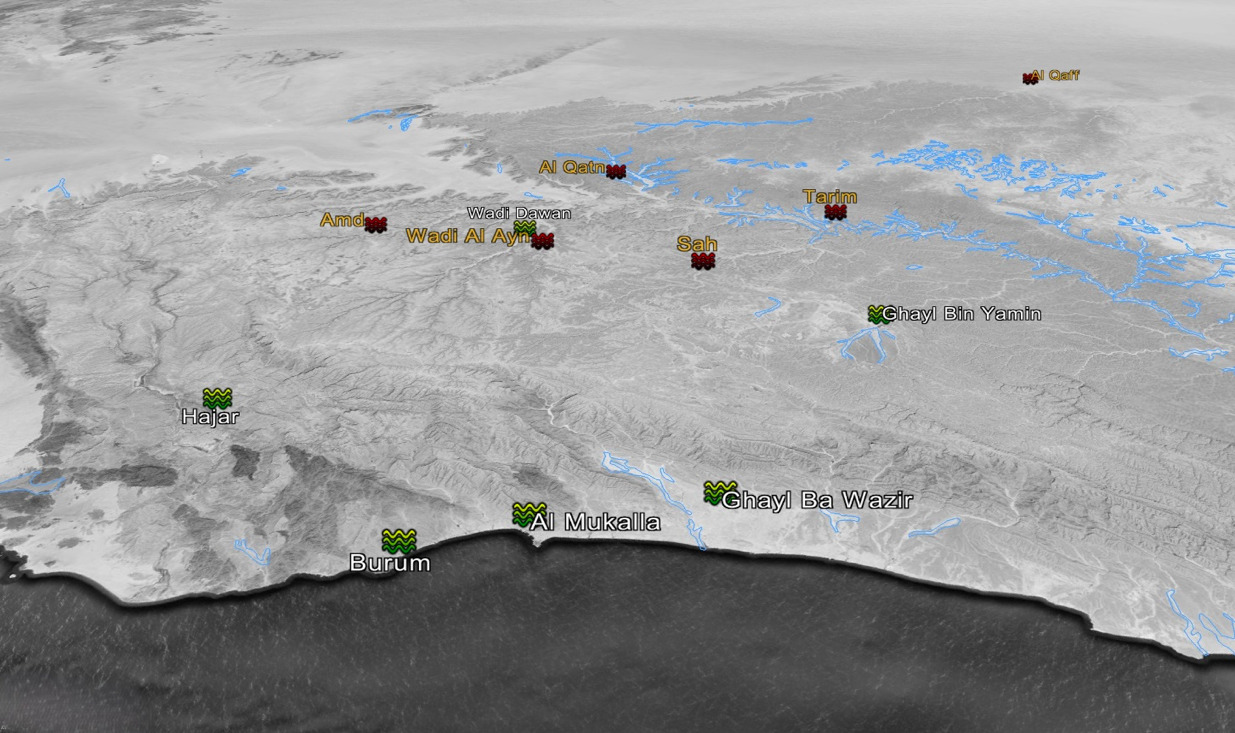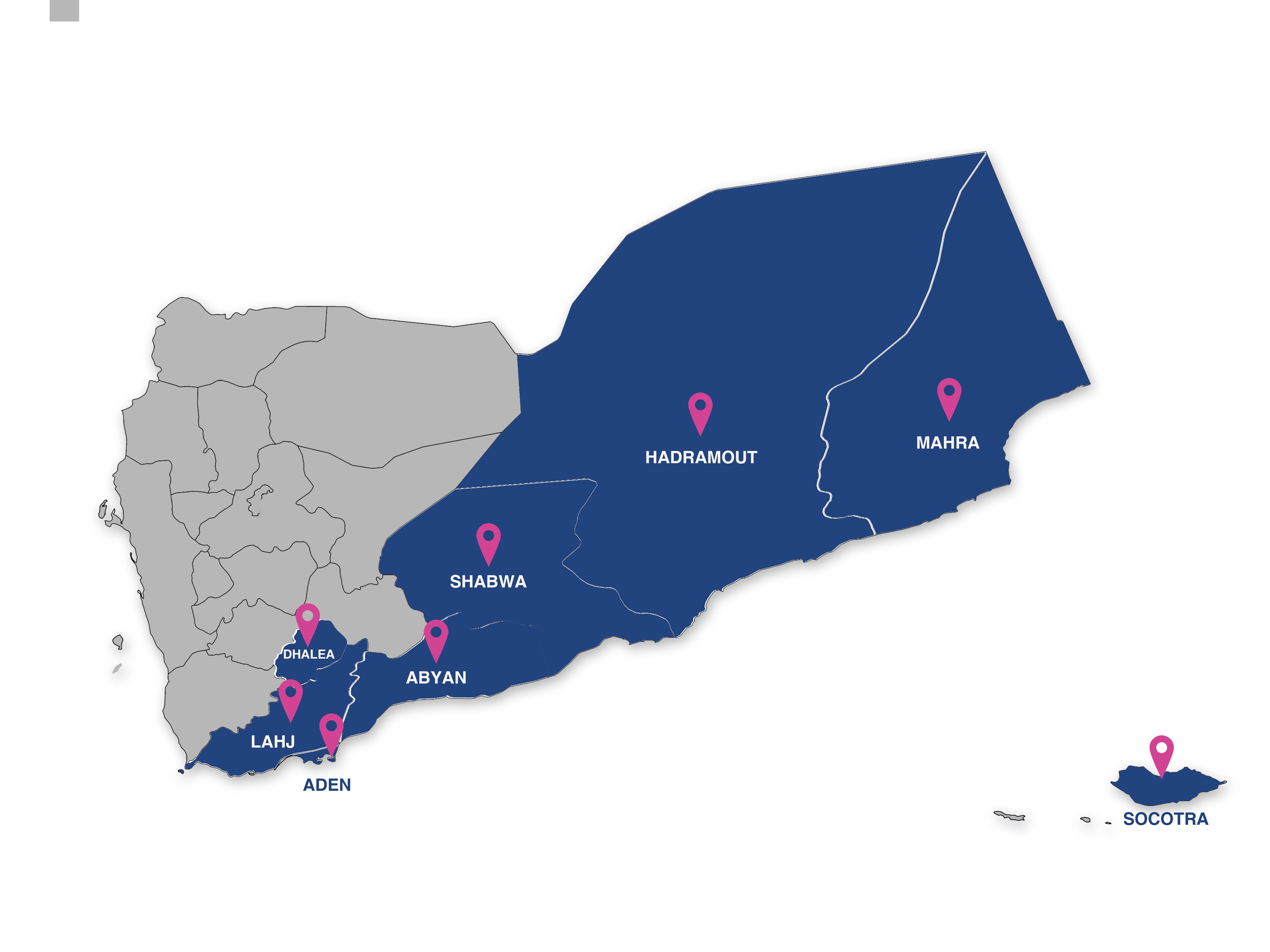
Floods block a road in Seyiun, Hadramout (local media)
Last updated on: 24-04-2024 at 4 PM Aden Time

The floods in Hadramout and Al-Mahra are not merely a local or national issue; they are a symptom of a global crisis that requires a concerted, international response and the experiences of these governorates must inform a proactive stance.
Ahmed Bahakim (South24)
In the eastern reaches of South Yemen, the governorates of Hadramout and Al-Mahra have become a stark tableau of climate change's relentless force. The city of Mukalla, nestled within Hadramout, has recently endured a deluge of heavy rains and floods, a calamity that has thrust the region into the international spotlight. This article delves into the profound implications of such severe weather events, the disruptions they cause, and the urgent need for action [1].
Mukalla, a city once known for its historic port and bustling trade, has become emblematic of the devastation wrought by extreme weather. The key finding here is inescapable: the city has been severely affected by heavy rains and floods. The trend is equally alarming, with the extreme weather conditions leading to significant property and infrastructure damage. The implication is clear and urgent: there is a critical need for robust infrastructure that can withstand such severe weather events to prevent future fatalities and property loss [2].
Related: A person died and damage caused by floods that struck Hadramout in South Yemen
The floods have left a trail of destruction, causing substantial damage to drinking water wells and agricultural irrigation networks, particularly in Mukalla and Tarim district. Essential services faced disruptions, marked by power outages, even as roads were inundated or damaged, affecting transportation routes. The implications are dire, and highlight the urgency for implementing an improved disaster response systems and the reinforcement of essential services to ensure continuity during such crises [3].
Governorate | Area | District |
Hadramout | Coast | Mukalla |
Hadramout | Coast | Ghayl Ba Wazir |
Hadramout | Coast | Hajar |
Hadramout | Coast | Wadi Dawan |
Hadramout | Coast | Burum |
Hadramout | Coast | Ghayl Bin Yamin |
Hadramout | Wadi | Tarim |
Hadramout | Wadi | Sah |
Hadramout | Wadi | Amd |
Hadramout | Wadi | Wadi Al Ayn |
Hadramout | Wadi | Al Qatn |
Hadramout | Wadi | Al Qaff |
The most impacted districts In Hadramout (Source: Office of the Ministry of Agriculture and Irrigation, Hadramout).
In the wake of the floods, academic activities have been suspended, and the start of classes postponed due to safety concerns. This trend is not unique to Yemen; educational disruptions are a common consequence of natural disasters. This points to the need for having contingency plans in place in the education sector to minimize the impact on students' learning during emergencies.

The most impacted districts In Hadramout (Source: South24).
The Early Warning Center's alerts about air instability affecting multiple governorates indicate that a broader storm system is at play. The region is susceptible to tropical depressions that can bring about torrential rains. Strengthening the Early Warning Systems and community preparedness can mitigate the adverse effects of such weather patterns.
The analysis underscores the vulnerability of the region's infrastructure to extreme weather conditions and its broad impact on the community's daily life. It calls for an examination of the emergency response plans and infrastructure resilience to improve the disaster preparedness and response mechanisms. This will help in safeguarding the well-being of the community and ensuring the provision of essential services during such crises [4].
Related: Climate Change Impacts and Vulnerabilities in Yemen
The recent events in Hadramout and Al-Mahra are a clarion call for action. The international community, along with local governments, must come together to address the immediate needs and lay the groundwork for a more resilient future. Investments in infrastructure must prioritize durability and adaptability to withstand the onslaught of an ever-changing climate.
Moreover, innovative solutions are the need of the hour to ensure there is no disruption of education, a cornerstone for future development, and there is continuity of learning, even in the face of disaster. For this, the use of technology, such as online learning platforms, can be part of a broader strategy to maintain educational services when traditional classrooms are rendered inaccessible.
There is need for a deeper study of the regional weather patterns and for a more robust approach to climate science in the region. Enhanced early warning systems, coupled with community education on disaster response, can save lives and reduce the economic impact of such events. There is also need to integrate traditional knowledge with modern meteorological practices to create a more effective early warning network that serves the unique needs of the region [5].
The floods in Hadramout and Al-Mahra are not merely a local or national issue; they are a symptom of a global crisis that requires a concerted, international response. As the world grapples with the realities of climate change, the experiences of these governorates must inform a proactive stance on infrastructure development, disaster preparedness, and climate adaptation strategies. The time for reactive measures has passed; a proactive and preventive approach is the only way forward to ensure the safety and prosperity of communities at the mercy of an unpredictable climate change.
To effectively face the climate change catastrophe, here are recommendations for the government, humanitarian organizations, and international communities:
To the Government:
- Invest in Infrastructure: Develop and maintain infrastructure that is resilient to extreme weather events. This includes flood defenses, robust housing, and emergency shelters.
- Urban Planning: Implement sustainable urban planning that considers climate risks, with green spaces and water management systems to mitigate flood impacts.
- Policy and Legislation: Enact policies that reduce carbon emissions and promote renewable energy sources. Also, create legislation that ensures climate adaptation measures are integrated into all levels of governance.
- Emergency Preparedness: Establish and regularly update comprehensive emergency response plans, including early warning systems and evacuation protocols.
- Education and Awareness: Educate the public about climate change and its impacts. Encourage community involvement in sustainability initiatives.
To the Humanitarian Organizations:
- Disaster Response and Relief: Be prepared to provide immediate disaster response and relief services, including food, water, shelter, and medical aid.
- Capacity Building: Work with local communities to build capacity for disaster preparedness and response. This includes training in first aid, search and rescue, and community-based risk assessments.
- Support Sustainable Livelihoods: Help communities develop sustainable livelihoods that are less vulnerable to climate impacts, such as drought-resistant agriculture.
- Advocacy: Advocate for the rights and needs of the most vulnerable populations affected by climate change, ensuring their voices are heard in policy-making processes.
To the International Communities:
- Global Cooperation: Foster international cooperation to address climate change, including technology transfer and financial support for mitigation and adaptation efforts in developing countries.
- Funding for Climate Action: Increase funding for climate action, particularly for adaptation projects in the most vulnerable regions.
- Research and Innovation: Support research into climate change impacts and invest in innovative solutions to mitigate these impacts.
- Climate Justice: Work towards climate justice, ensuring that those who have contributed least to climate change do not bear the brunt of its impacts.
Call to Action:
The climate crisis requires a unified global response. It is imperative that all stakeholders — governments, humanitarian organizations, and international communities — work together to implement these recommendations. By doing so, we can build a more resilient region that is better equipped to face the challenges of climate change and protect the most vulnerable among us.
Economist and energy researcher, Researcher at South24 Center for News and Studies
:
[1] "Climate Change Profile: Yemen - Yemen | ReliefWeb." 13 Feb. 2019, reliefweb.int
[2] "A person died and damage caused by floods that struck Hadramout in South Yemen" 18 Apr. 2024, south24.org
[3] UNDP Yemen: Building resilience: Supporting farmers to face the impact of climate change in Yemen. (n.d.). Yemen. yemen.un.org
[4] "Climate Change Impacts and Vulnerabilities in Yemen" 06 Nov. 2022, south24.org
[5] giz: Strengthening resilience and promoting rural
households in Yemen (n.d.). Yemen. file:
Previous article

55 Minutes ago

4 Days ago